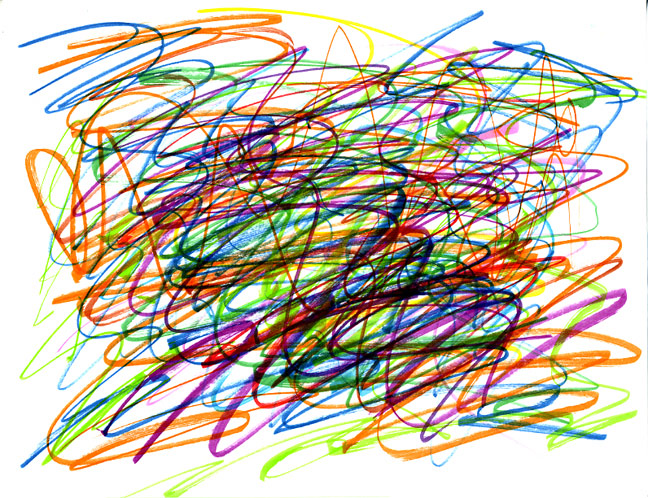Drawing is one of children's favourite activities. Children draw suns, flowers, men, shapes, but how do their drawings evolve according to their age ? And what are the benefits of this activity ?
We give an answer in our article !

From 12 to 18 months, your baby begins to develop new motor skills and can coordinate movements.
The first step of drawing is "scribbling". The baby can only hold the pencil and "scribble" on all the supports that fall under his hand.

Around 2 years old, scribbling becomes drawing.
The child develops muscles, which allows to control movements. The development of the vision makes it possible to follow quick movements. It is at this age that the child manages to lift a pencil to create a first closed shape. The child combines circles and lines, called suns, but for the child this shape can represent a plant, a car, a man or even an animal...

Around the age of 4, the child begins to draw things that have been seen before.
It is from this age that the "tadpole" man appears: a circle that represents both the head and the trunk, and 4 sticks around it to represent legs and arms.
During the kindergarten years, drawings and men evolve. The child makes "tadpole" man evolve by adding a neck, then hair, as well as eyes, fingers...

It is only around 6 years old that the child begins to dress the man.
The evolution of the drawings shows that children do not draw what they see but a representation of what they know.

Before 7 years old, the drawings are still disproportionate since they do not yet have the notion of perspective.

Throughout the evolution, the child is never tired of drawing. Drawing is an activity that allows the child to develop senses, muscles, brain, vision, and it is also an essential step in the future learning of writing.
Drawing is an activity that helps in the development of the child:
The drawing allows the development of the child's motor skills by keeping the pencil in the hand, as well as the direction of the pencil on the sheet and the control of the gesture.
. Improved coordination of actions. The child draws lines, geometric shapes, controls of gestures until the desired result of the drawing.
. Cognitive development since the child draws what have been seen before, thus it creates work for the brain and sense of observation.
. The child also helps focusing and develop patience. It can help learning to be patient in order to reach the end of the drawing which was imagined. The child comes to a self-fulfilment at the end, with the desire to share drawings with all the people around.
Drawing is also a way of showing emotions and character, in fact the child can express through drawing. Thus, the parents can understand the state of mind of the child, thanks for example to the representation of the family by the child or the choice of the colours used, the size of the lines etc.
Drawing develops the child's artistic sense, creativity and imagination. The drawing is a support of imaginary history. Ask a child what was drawn, it will most of the time be amazing stories.